Overwatch 2 6v6 Return Debate: Latest Developments & Community Reactions
Updated On: November 13, 2025 by Aaron Connolly
Origins of the 6v6 Format in Overwatch
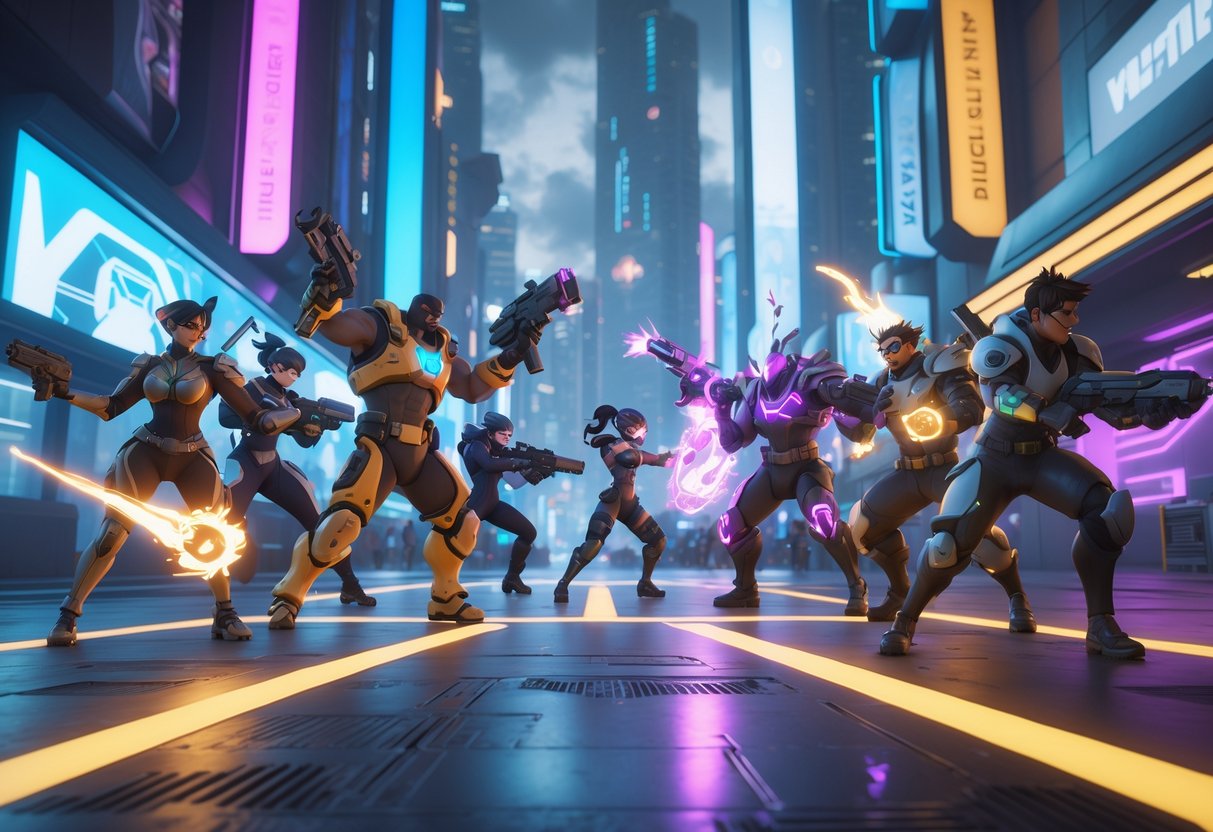
Back in 2016, Overwatch launched with six players per team. That setup really shaped the game’s strategy and gave it a unique identity for years.
Millions dove into role-based teamwork before Overwatch 2 swapped things up with 5v5. If you played back then, you probably remember the chaos and the fun.
How 6v6 Shaped the Original Overwatch
The 6v6 format made Overwatch stand out from the start. Teams picked six heroes, usually split into tank, damage, and support.
This lineup led to some wild tactical battles. Double tank comps pushed heavy frontlines. Two supports meant you could keep the healing flowing.
Having that extra player on each side made team fights pretty complex. Teams had to coordinate six abilities—no small task. If you wanted to win, you had to nail those ult combos.
Popular team compositions included:
- 2 tanks, 2 damage, 2 support (the classic)
- 3 tanks, 3 support (the infamous GOATS meta)
- 1 tank, 4 damage, 1 support (dive comps)
But, let’s be real—queue times could get rough. Finding enough tank players often took forever. A lot of folks just didn’t want to tank.
Legacy Mechanics and Role Dynamics
The 6v6 system gave us some unique role dynamics that Overwatch 2 just doesn’t have anymore. Tank players could focus on being a main tank or an off-tank.
Reinhardt led the charge with his shield. D.Va peeled for teammates and made space. That tank synergy really defined team play.
Support players had clearer jobs too. Main healers kept tanks alive. Flex supports chipped in with utility or extra damage.
With twelve heroes on the field, things got visually messy. New players often lost track of what was going on. Veterans, though, loved the extra complexity.
Role flexibility was way higher in 6v6. You could swap to triple tank or even quad DPS mid-match if the mood struck.
Warning: Some players look back at 6v6 with nostalgia, forgetting just how frustrating those long queues and balance issues could get.
Transition to 5v5 in Overwatch 2
When Overwatch 2 came out, Blizzard dropped a bombshell—they cut team sizes to five. They wanted individual players to matter more and hoped this would fix those brutal queue times.
But honestly, it changed the whole feel of the game.
Blizzard’s Rationale Behind the Change
Blizzard pointed to a few big problems with 6v6. Tank queues were way too long—sometimes over 10 minutes.
They also wanted players to feel like their actions mattered. In 6v6, team play could drown out individual skill. Ultimate abilities often made fights feel like chaos, not strategy.
Why Blizzard made the switch:
- Faster matchmaking for everyone
- Less pressure to play perfectly as a team
- Fewer heroes on screen, so less visual overload
- Balancing the game got a bit simpler
By removing a tank, Blizzard hoped to solve all these issues at once. Teams could focus less on rigid strats and more on making plays.
Key Differences in Gameplay Experience
5v5 changed matches right away. Now, tank players have to carry the whole frontline on their own.
Combat got faster and more in-your-face. With only one tank, teams have to commit or back off quickly. Heroes like Tracer and Genji can slip through and punish supports a lot more.
Map control feels different. Teams can’t hold as many angles at once with fewer players. Choke points that once needed perfect timing to crack are easier to push now.
DPS players got more room to make big plays. Blizzard gave support heroes passive healing to help them survive. Tank heroes got big health and damage buffs to handle their new solo role.
These changes split the community. Some love the faster, more aim-heavy gameplay. Others really miss the strategic depth of 6v6.
Current State of the Overwatch 2 6v6 Return Debate
The 6v6 debate keeps heating up. Blizzard is testing new formats, and the community can’t agree. Some folks think 6v6 could fix today’s balance problems, while others think it’ll just make new ones.
Community Divide Over Game Formats
The Overwatch 2 community is pretty split over team formats. A lot of OG players want 6v6 back for its teamwork and less stressful tanking.
Pro-6v6 folks say:
- Tanking isn’t as stressful with two tanks
- You get more strategy with double tanks
- Queue times used to be better
5v5 fans argue:
- Fast games are more fun
- Smaller teams are easier to coordinate
- Balance feels fine for most people
Blizzard’s Season 14 tests got all kinds of feedback. Game Director Aaron Keller points out that millions still enjoy 5v5 every day, so any change is a big risk.
Blizzard’s running experimental modes like “Min 1, Max 3″—teams need one of each role, but not more than three of any.
Major Arguments For and Against 6v6
Why people want 6v6 back:
- Tank synergy: Two tanks open up more strategies
- Less solo pressure: Players don’t feel like one mistake ruins everything
- It worked before: Overwatch was huge with 6v6
Why others don’t:
- Queue times: Need more tanks, so finding matches could slow down again
- Balance gets messy: Twice the tanks means twice the headaches for devs
- Power creep: Heroes made for 5v5 might go wild in 6v6
Blizzard plans to tune down tank survivability and drop some Overwatch 2 passives during 6v6 tests. They’re even thinking about keeping both formats around if it works out.
Esports pros can’t agree either. Some want 6v6 back, others dig the current speed.
Blizzard’s Official Response and Testing Plans
Blizzard has announced they’ll test 6v6 in Overwatch 2 during Season 13 and 14. Aaron Keller says these trials will help decide if 6v6 and 5v5 can actually exist together.
Limited-Time 6v6 Modes and Events
Two separate 6v6 tests are coming in Season 14. The first is “Min 1, Max 3,” where you need at least one of each role but no more than three.
Players can swap roles mid-match without breaking team limits. It’s kind of a hybrid between strict Role Queue and total Open Queue chaos.
The second test brings back classic 2-2-2 comps but uses Overwatch 2 hero updates. Both modes will show up as separate cards in Unranked.
What’s changing for 6v6 testing:
- Tanks get less health and power
- Some Overwatch 2 passives are removed
- Hero balance tweaks just for 6v6
Season 13 has two 5v5 test modes as a warmup. “Limit 2” lets only two of each role and uses Open Queue tank balancing. “Kingmaker” gives bonuses if you’re the only one on your role.
Director’s Take and Public Statements
Aaron Keller wrote up a detailed post about how Blizzard is approaching these tests. He made it clear that 5v5 isn’t going away unless a ton of players want 6v6 back.
They’re watching for signs that people really want bigger team sizes. Keller says they’re open to new ideas if it means avoiding old 6v6 problems.
Blizzard used to say 6v6 and 5v5 couldn’t coexist. Now, Keller admits they might change their minds if the community rallies behind 6v6.
They’re looking for “a surge of players” who not only try 6v6 but keep playing it. Player feedback might be the biggest factor in what happens next.
Keller insists the team just wants to “make the game that you want to play.” That’s the main reason they’re open to changing formats if that’s what players want.
Impact of 6v6 on Role Balance
Switching from 5v5 back to 6v6 really shakes up how each role works. Tanks need nerfs so they don’t dominate, and supports and DPS need tweaks to keep things fair.
Tank Role Adjustments
Going back to 6v6 means tanks can’t stay as strong as they are in 5v5. Right now, tanks have huge health bars and damage to make up for being solo.
Add a second tank, and they just steamroll fights. You can see this in Open Queue—multiple buffed tanks take over matches.
Key tank changes:
- Lower health on most tanks
- Reduced damage to keep things balanced
- Longer cooldowns for crowd control abilities
- Weaker shields for barrier tanks
The community has already come up with tons of balance patches for this. Some of these fan fixes are actually pretty detailed.
Tank synergy matters again. Pairing shield tanks like Reinhardt with off-tanks like Zarya becomes a real strategy.
Support Role Considerations
Supports have to adjust a lot in 6v6. More tanks means more health to heal, but maybe less overall damage coming in.
Healing might need a bump to keep up with bigger teams. But supports also get extra protection with two tanks up front.
Support tweaks could include:
- Changing healing per second
- Adjusting ultimate charge rates
- Tweaking how supports position
- Adding survivability tools
The meta shifts back to classic support duos. Main healers like Ana or Baptiste team up with utility supports like Lucio or Zenyatta.
Support players have to juggle bigger health pools and work with two tanks again.
Damage Role Balancing
DPS heroes need a careful touch in 6v6. More tanks means it’s harder to break through, so damage dealers need enough punch.
But those extra tanks also give DPS more cover. It’s a tricky balance between offense and survival.
Damage role changes might focus on:
- Better tank-busting for sustained DPS
- New flanking routes to fit larger teams
- Tweaked ult economy for team fights
- Cooldown changes for escapes
Burst damage isn’t as reliable against tank duos. Sustained DPS like Soldier: 76 or Cassidy start to shine over one-shot heroes.
The damage meta opens up, with both shield-breakers and mobile flankers getting a shot in six-player teams.
Queue Times and Match Accessibility
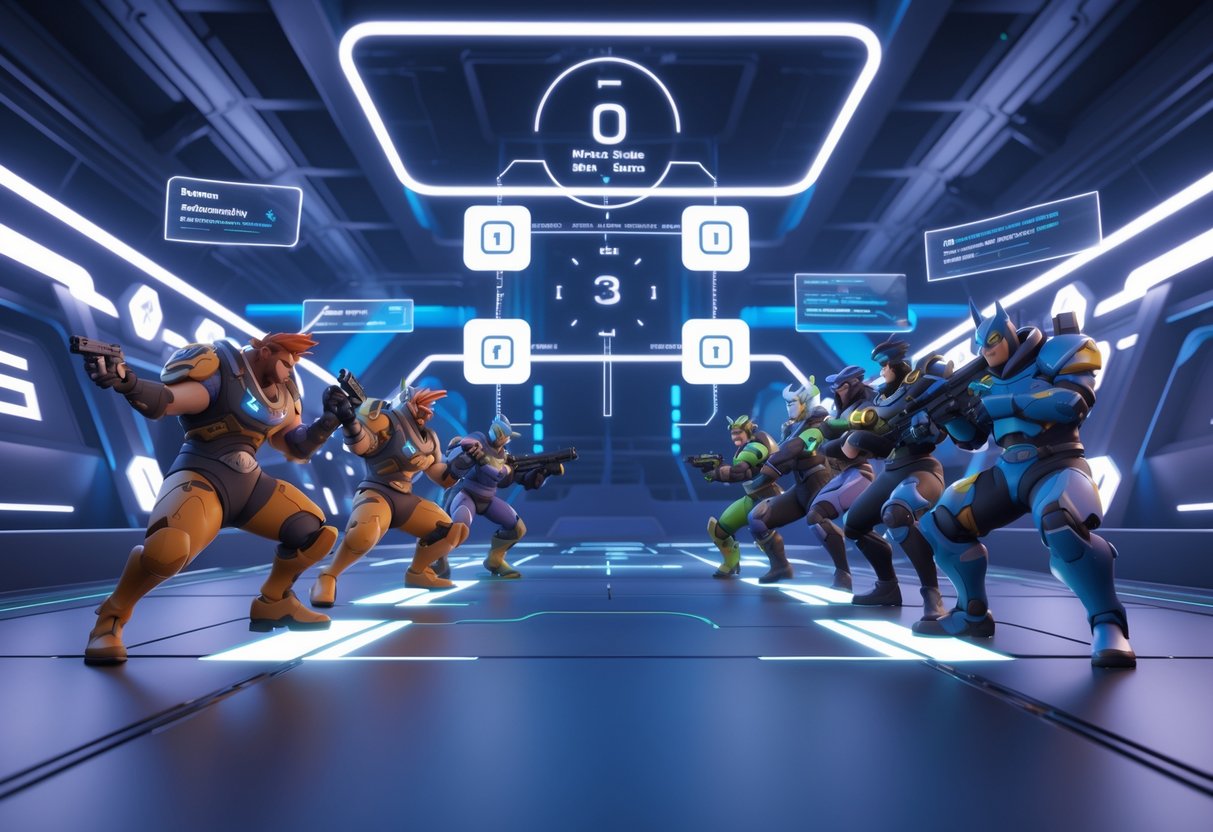
Long queue times pretty much killed the original 6v6 format. Players waited more than they played. Blizzard keeps tinkering with role queue solutions and flexible team compositions to try and fix these accessibility headaches.
Matchmaking Challenges with 6v6
The main issue with 6v6 really comes down to numbers. Every match needs 12 people instead of 10. That’s 20% more players for every game.
Tank shortage keeps causing bottlenecks. Every 6v6 test runs into this. Most folks want to play damage heroes, not tanks.
Overwatch’s original version ran into the same wall. DPS players regularly waited 8-15 minutes just for a match. Meanwhile, support and tank players got in faster, but the whole system just struggled.
Current 6v6 tests show misleading queue times. Players see 3-8 minute estimates, but sometimes they find matches in seconds. Clearly, the matchmaking system can’t predict wait times accurately yet.
Peak hours matter more than ever. Since matches need more players, playing during off-peak hours gets rough in some regions. Late night or early morning? Good luck finding a game—you’ll probably give up on the queue.
Role Queue Solutions
Blizzard’s trying two main fixes for queues. The first is bringing back strict role queue from the original game.
Role queue forces balanced teams by making players pick their role before matchmaking. Each team gets two tanks, two damage, and two supports. It stops open queue chaos, but waiting for popular roles takes longer.
The other experiment is the “Max 3, Min 1” system. Teams can have up to three of any role, but must have at least one of each.
That kind of flexibility could really help with queue times. If you need two more players, any mix of tank, damage, or support can fill in.
Hero balance changes roll out alongside these tests. Roadhog and Zarya get tweaks for 6v6. Tanks pick up new passive abilities to fit two-tank comps.
The community can’t agree on which system works best. Competitive players lean toward role queue for team consistency. Casual players? They love the open queue’s flexibility.
Esports Perspective on the 6v6 Return
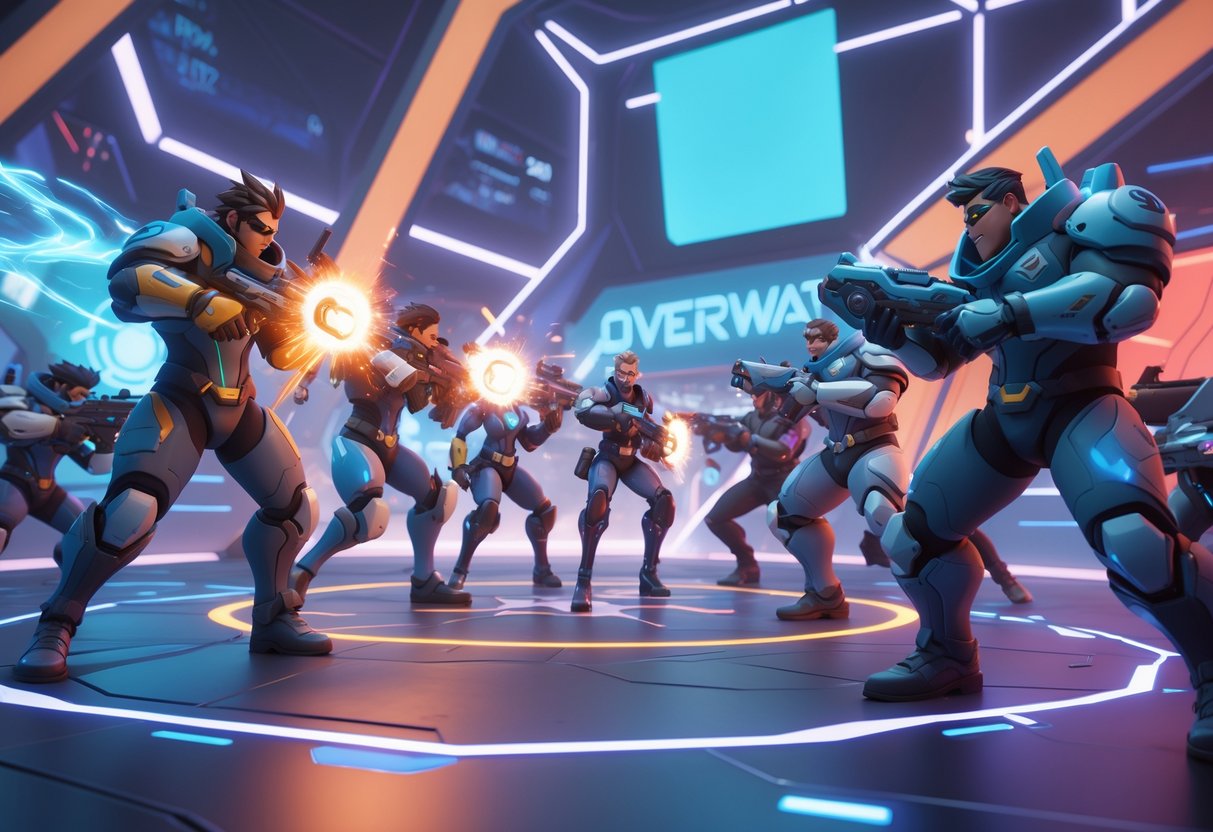
Pro players and tournament organizers don’t really know how to feel about 6v6 coming back to Overwatch 2. Many worry that changing the game structure could mess with team dynamics and strategies they’ve spent years building.
Professional Player Feedback
A lot of pros started out in the original 6v6 days. They talk about missing the teamwork and coordination that format demanded.
Tank players have been the loudest supporters of 6v6. In 5v5, solo tanks carry all the pressure and responsibility.
Some big-name DPS players push back. They claim 5v5 lets individual skill shine more and speeds up the game.
Support players can’t agree. Some miss the safety net of two tanks. Others like having more impact in 5v5.
Pro teams worry about the cost of roster changes. Adding a sixth player means higher salaries and more complicated team dynamics.
Coaches seem cautious. Many like the simpler strategies and coordination in 5v5 over the complexity of 6v6.
Effect on Competitive Integrity
Tournament organizers run into real headaches with 6v6. Scheduling gets trickier when you have to wrangle six players per team.
Prize pools get stretched thinner. Teams split winnings among more people, so individual payouts drop.
The spectator experience might take a hit. Watching six players per side can get chaotic, especially when viewers are used to 5v5’s cleaner look.
Esports infrastructure was built for 5v5. Switching back would need big investments in broadcast systems and analytics tools.
Regional leagues worry about finding enough skilled players. Smaller markets really struggle to field six good players per team.
Quick tip: If you want to keep up, check out Overwatch League discussions on social media. That’s where you’ll hear how the pros actually feel.
Player Experience in 5v5 Versus 6v6
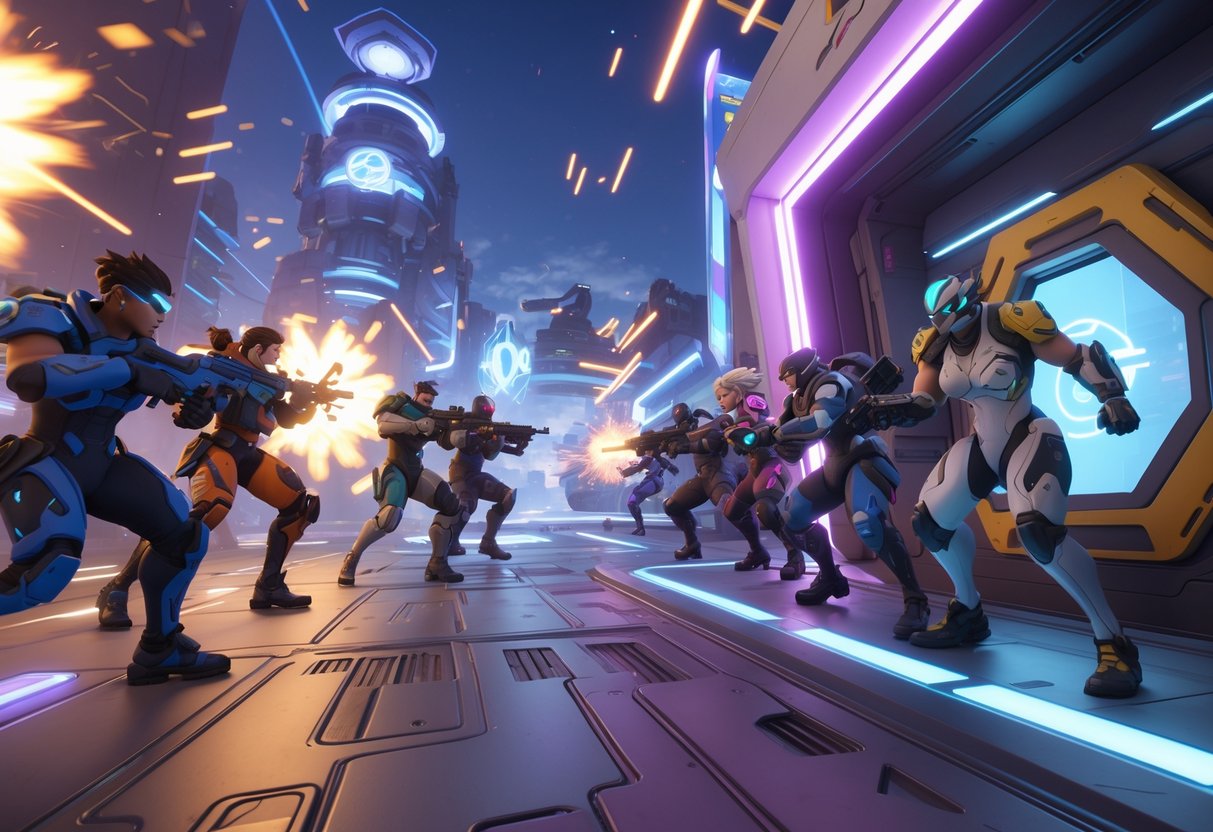
Switching from 6v6 to 5v5 completely changed the game’s feel and pace. Each setup demands different strategies and brings its own challenges, whether you’re new or a longtime player.
Strategic and Gameplay Differences
Match pacing really shifts between formats. In 5v5, fights break out faster and mistakes hurt more. Losing one player drops your team to 80% strength, not 83% like in 6v6.
Tank players take on way more responsibility in 5v5. One tank has to make space, soak up damage, and lead the team. With 6v6, two tanks could share the load and cover each other’s weaknesses.
The coordination requirements don’t stay the same:
- 5v5: You need more individual skill and quick decisions
- 6v6: Team coordination and strategy matter more
Queue times played a big role in the format shift. Overwatch 2 needed fewer tanks per game, which cut down wait times when tanks weren’t popular. That solved a real problem but changed the core vibe of matches.
System performance factored in too. Running 6v6 with new graphics and effects caused issues on older PCs. One extra player means more abilities, more particles, and more stuff for the computer to handle.
Accessibility for New and Veteran Players
New players usually find 5v5 easier to follow. Fewer people on screen means less chaos and simpler team comps. It’s easier to see who’s pulling their weight—or who’s messing up.
Veteran players often prefer 6v6. They miss the deeper strategy and teamwork that came with two tanks. That setup allowed for more creative team comps and role combos.
Learning curves feel different:
| Format | New Players | Veteran Players |
|---|---|---|
| 5v5 | Easier to pick up, less overwhelming | More individual pressure |
| 6v6 | Harder at first | More strategic options |
Role distribution changes the game. In 6v6, supports could focus on healing, protected by two tanks. Now, with just one tank, support players need sharper positioning and awareness to survive.
The skill ceiling shifts too. 5v5 rewards mechanical skill and quick thinking. 6v6 put more weight on teamwork and planning, so different players could shine.
Potential Future Formats and Innovations
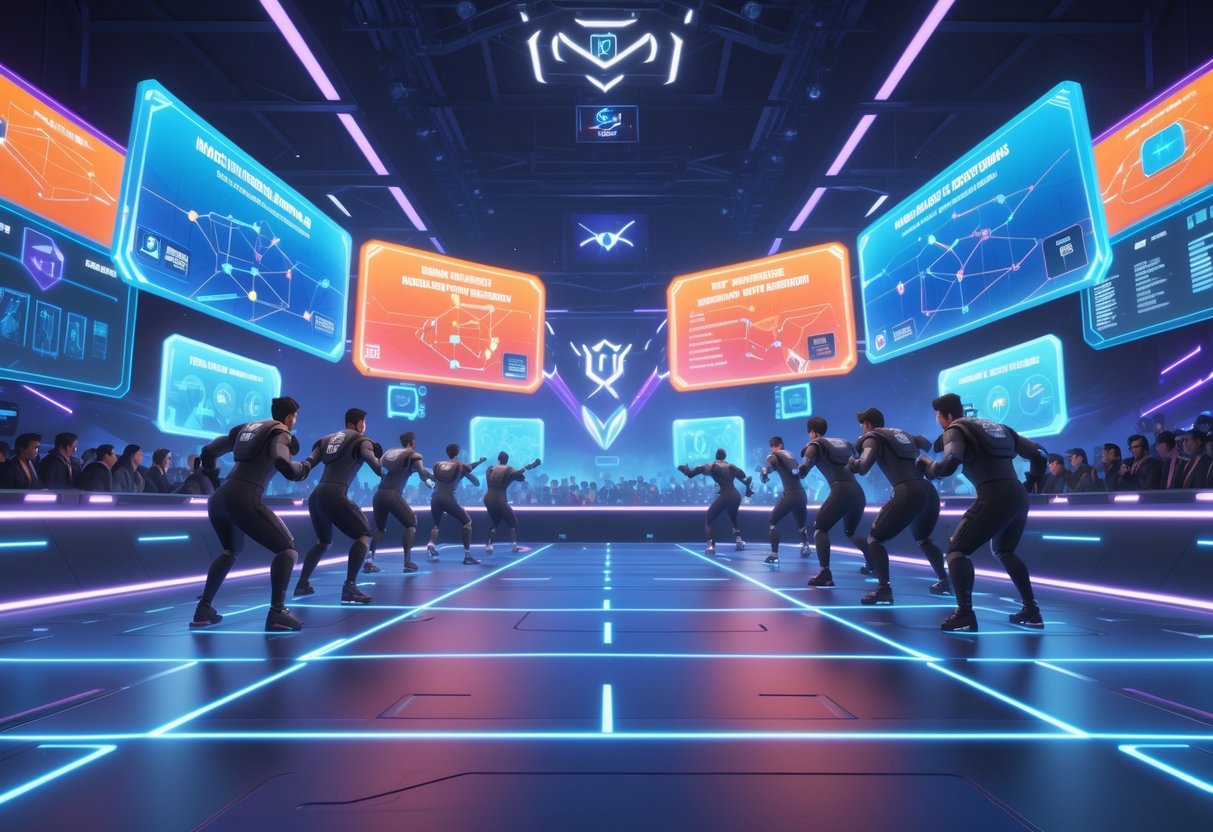
Blizzard keeps experimenting with team-based gameplay. Who knows—maybe we’ll get dedicated 6v6 modes, or something totally new. These tests could lead to several formats living side by side, giving players more ways to play.
Possible Permanent 6v6 Modes
Blizzard has even floated the idea of having both 5v5 and 6v6 as permanent options in Overwatch 2. That’s a big shift, and it’s really just a response to years of players asking for the old format.
The devs plan to watch player engagement closely during Season 14’s tests. If enough people stick with it, we might see dedicated 6v6 playlists for good.
Possible permanent options:
- Classic 2-2-2 role queue with updated hero balance
- Open queue with flexible team comps
- Separate competitive ladders for 6v6 and 5v5
Whether these stick around depends on player interest. Blizzard needs proof that 6v6 won’t split the community too much.
Hybrid Team Compositions and Rules
The “Min 1, Max 3” system is Blizzard’s boldest idea yet. Each team must have at least one player in each role, but no more than three of any role.
This lets you build comps like 1-3-2 or 2-1-3, as long as you cover all roles. Players can swap roles mid-match, so long as they stay within the limits.
Key hybrid features:
- Dynamic switching: Change roles on the fly, no lobby lock-in
- Balanced requirements: Every role gets a spot
- Strategic depth: More tactical options than the old systems
Season 13’s “Limit 2” and “Kingmaker” modes test similar ideas in 5v5. Blizzard wants to see what actually works before making big changes.
The hybrid system could fix queue times and open up new strategies at the same time.
Community Feedback and Social Media Reactions
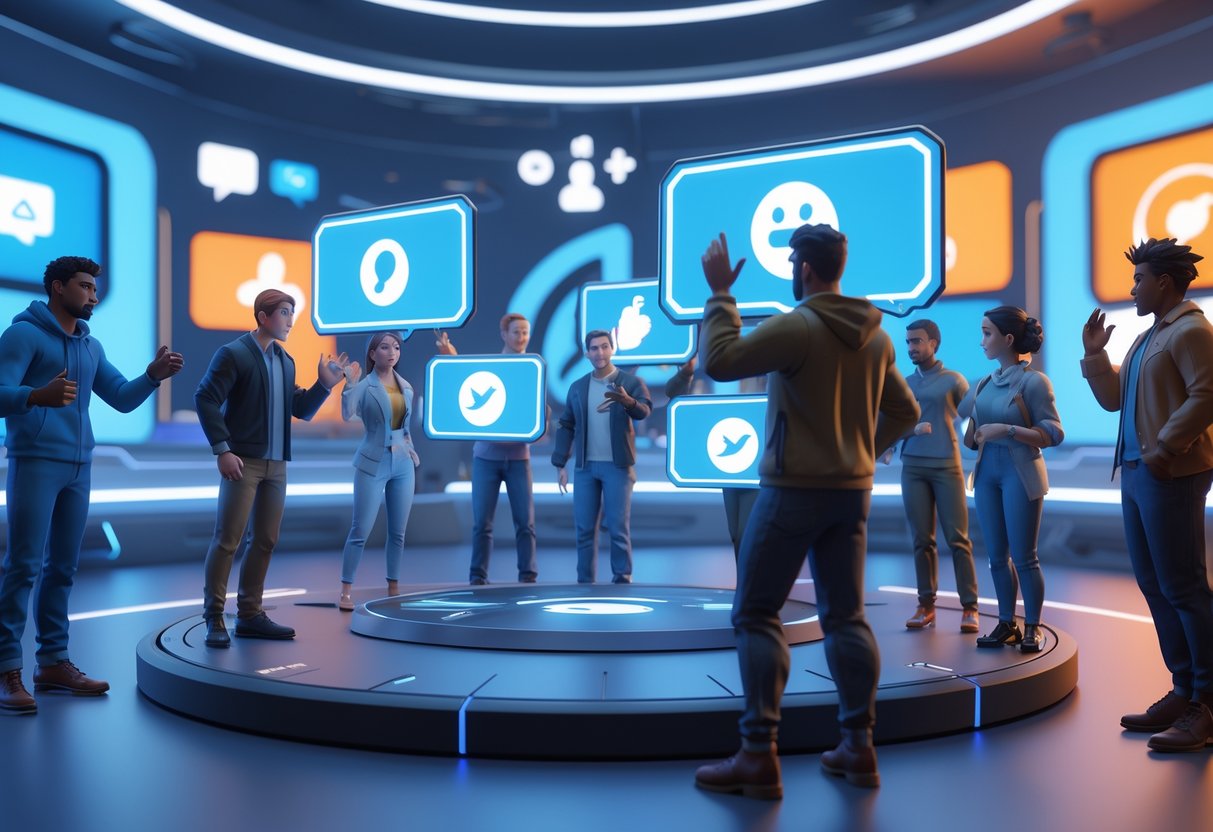
The return of 6v6 in Overwatch 2 has blown up on gaming forums and social media. Players are split—some are thrilled for the classic format, others worry about balance and visual clutter.
Polls and Sentiment Analysis
Social media’s become a battleground for the 6v6 vs. 5v5 debate. Reddit, especially, is full of divided takes.
A lot of players vent about 5v5. One big gripe? Friend groups can’t all play together without leaving someone out.
Common positive reactions to 6v6:
- Brings back that “old magic”
- Better team coordination
- More strategy
But plenty of folks push back. They like 5v5’s cleaner visuals and faster pace.
According to community responses, feedback on the 6v6 playtest has mostly been negative. Many players want a role queue system to come back alongside 6v6.
Blizzard isn’t making any promises. Even though some feedback’s positive, the devs haven’t committed to 6v6 being permanent.
Influencer and Content Creator Perspectives
Gaming influencers and pros can’t agree on the format change either. Many content creators say their audiences are split.
Pro players in the Overwatch 2 scene argue about bringing 6v6 back to tournaments. Some say it adds strategic depth.
Content creators point out practical stuff. 5v5 gives more room for individual plays, but 6v6 lets teams get creative with strategy.
Hot creator topics:
- Queue time differences
- How easy it is to watch matches
- Tank role balance issues
Most creators just want players to have options. They’d rather see both formats in the game than force everyone into one.
Technical and Balance Challenges for Reintroducing 6v6
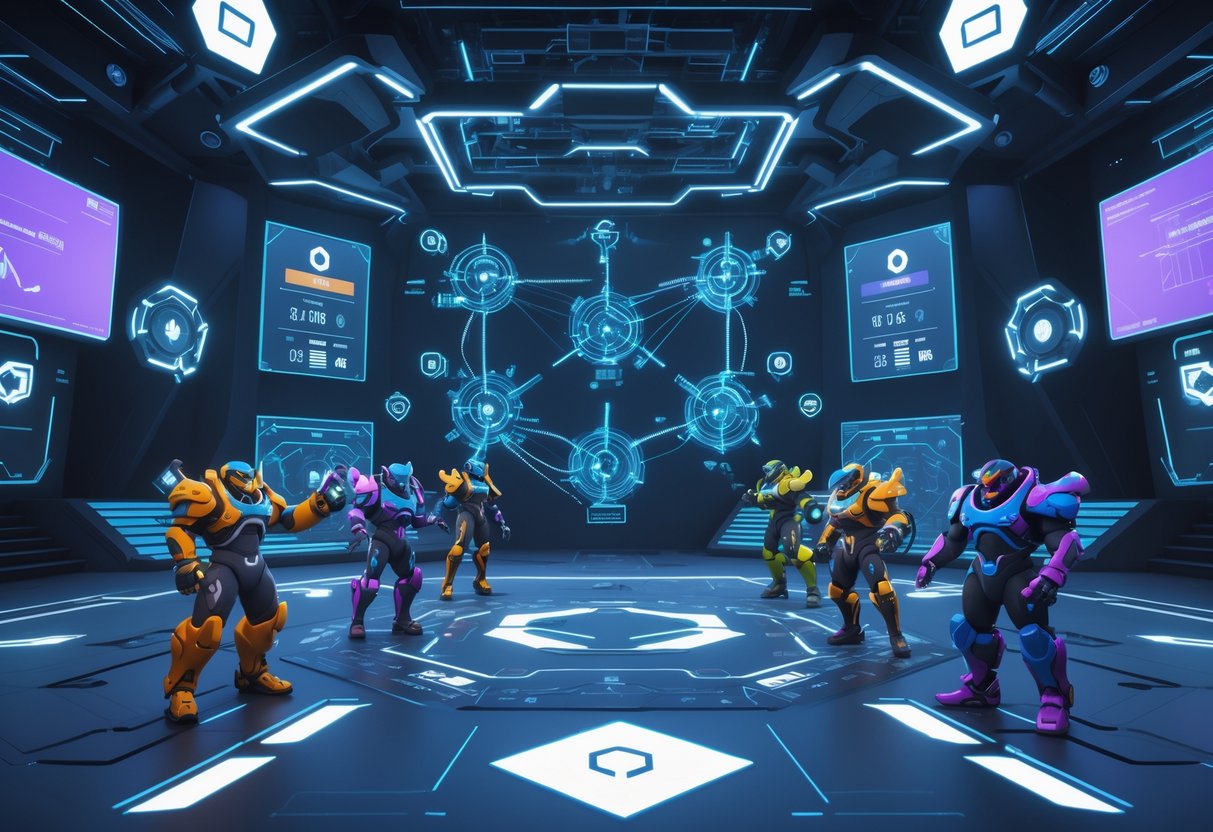
Blizzard faces some tricky technical hurdles trying to bring 6v6 back to Overwatch 2. The game’s current systems revolve around 5v5, so they’ll need to overhaul hero abilities and server infrastructure just to make it work.
Hero Passive Adjustments
Overwatch 2 heroes really need some serious rebalancing for 6v6 formats. Tank heroes especially stand out—they were built to handle whole teams by themselves.
We have to cut tank survivability a lot. Right now, tank passives hand them enough health and damage reduction to stand up to five enemies at once. Put two tanks on each team, and suddenly you’ve got a front line that’s almost impossible to break.
Blizzard wants to remove or at least tweak many Overwatch 2 passives during 6v6 testing. The tank role passive—reducing knockback and giving extra health—gets out of hand when you double it up.
Support heroes aren’t off the hook either. Their healing was balanced to keep four teammates up. Now, with five teammates and another support, healing gets out of control and drags fights on forever.
DPS heroes might not see as many changes, but they still need some tweaks. Abilities that feel fair in 5v5 can get overwhelming when you add more shields, healing, and crowd control from extra teammates.
Performance and Server Considerations
Throwing more players into every match puts extra strain on Overwatch 2’s servers. Each extra player bumps up server processing by about 20%.
Developers might need to tweak server tick rates to handle more player data. The 60Hz servers work for 5v5, but they could start to buckle with 12-player lobbies at busy times.
Memory usage also jumps with bigger teams. Every hero model, effect, and hit detection needs more resources than the 5v5 system ever did.
Queue times could get worse with 6v6. Finding 12 players instead of 10 takes longer, and let’s be honest—tank players weren’t exactly plentiful before.
Map design gets trickier, too. Overwatch 2 maps were built for 5v5, with certain choke points and sight lines. Add more players, and suddenly tight spaces get jam-packed, making some areas nearly impossible to cross.
Looking Forward: The Future of Team Formats in Overwatch 2
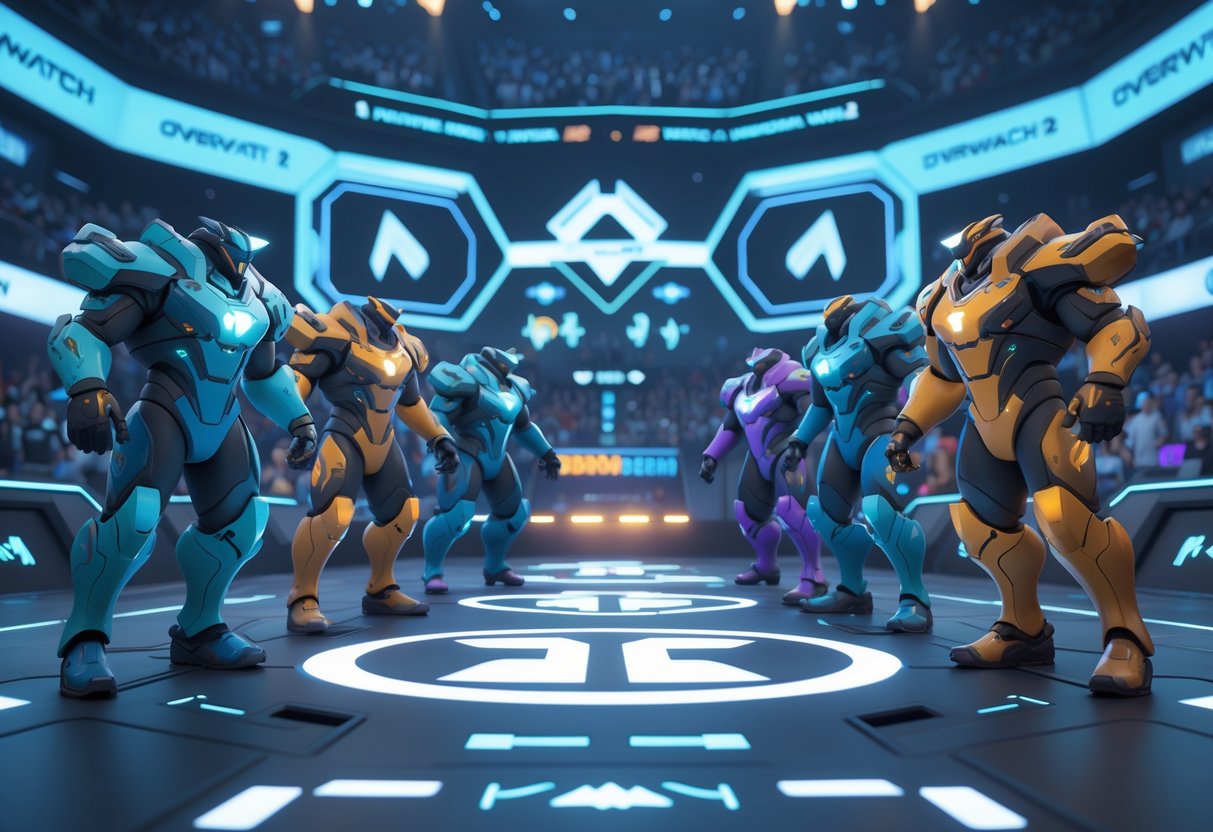
Blizzard faces growing pressure to make permanent changes after Season 14’s test results. Players want real answers about whether both 5v5 and 6v6 formats can stick around.
Long-Term Community Expectations
Players expect Blizzard to finally deliver on their testing promises in Season 14. Some fans see these tests as the last shot for the game’s future.
The community splits into three camps. Some want a full return to 6v6. Others like 5v5 just fine. There’s also a growing group hoping for both formats to stick around permanently.
Queue times are still the big worry. Players remember waiting 10 minutes or more for matches in the original Overwatch 6v6 days. Nobody wants to go back to that.
Blizzard has to balance nostalgia with reality. Bringing back old systems won’t work unless they fix the problems that made them leave 6v6 in the first place.
Community leaders keep a close eye on player counts during the tests. If not enough people show up, permanent 6v6 probably won’t happen.
Blizzard’s Approach to Ongoing Feedback
Blizzard says they’ll use more than just player surveys this time. They’ll look at match completion rates, queue abandonment, and how long people actually play.
Game Director Aaron Keller even hinted at keeping both formats if there’s enough demand. That’s a big shift from their old “one format only” approach.
The company tries to stay more transparent about decisions now. Regular blog posts and community updates show they’re actually listening this time.
Technical challenges haven’t disappeared. Running multiple formats means separate balance patches and more development resources that Blizzard has to commit for the long haul.
Success metrics matter. If 6v6 tests keep players engaged and queue times stay reasonable, there’s a real shot at seeing permanent 6v6 by 2026.
Frequently Asked Questions
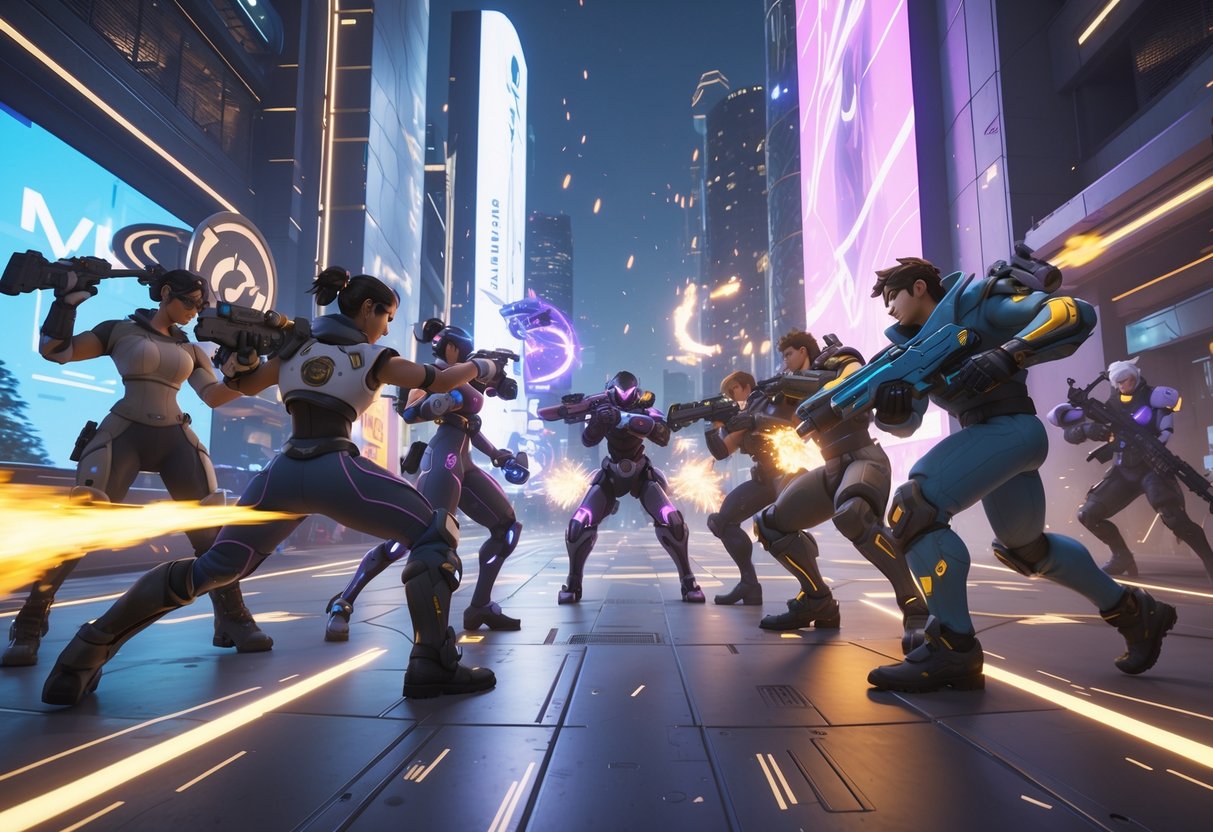
Blizzard announced that 6v6 modes will return to Overwatch 2 starting 17 December 2024, with two experimental formats testing different team compositions through early 2025. The community still can’t agree on whether these changes should replace or just complement the current 5v5 format.
What are the latest updates on the competitive 6v6 mode for Overwatch 2?
Blizzard confirmed that 6v6 will come back as experimental modes, not as a full replacement for competitive play right away. They announced two different 6v6 formats for testing.
The first mode sticks to traditional role queue—two tanks, two damage, two support. The second lets teams mix it up, with at least one and at most three heroes per role.
Pro players and esports organizers keep pushing for 6v6 in tournaments. Still, Blizzard hasn’t said if these modes will make it to ranked competitive play.
When is the expected release date for 6v6 in Overwatch 2?
The 6v6 Role Queue mode drops on 17 December 2024 and runs until 7 January 2025. That lines up with Season 14 and should go live at 7 PM GMT.
The Min 1 – Max 3 format follows right after, from 7 January 2025 to 4 February 2025. Both modes exist just for testing and community feedback.
If players respond well, Blizzard might add permanent 6v6 options in Season 15. The timeline depends on how these tests actually go.
How will the 6v6 format affect Season 15’s gameplay and strategy in Overwatch 2?
Teams will have to adjust strategies with two tanks back in play. That changes positioning and how teams engage fights. Tank synergy matters a lot more now, with players coordinating defense and space.
Support players deal with different pressure, since they can’t just focus healing on one tank. Damage heroes could find more flanking chances with a bigger frontline.
The Min 1 – Max 3 format might shake up the meta completely. Teams could run triple tank or try weird role mixes, depending on the map.
What has been the community’s reaction to the potential return of 6v6 in Overwatch?
The community stays sharply divided over 6v6. Original Overwatch fans mostly welcome the move back to the format they loved.
Others claim 5v5 feels cleaner, with less chaos and faster matches. Some worry 6v6 will just bring back slow, shield-heavy gameplay that drove people away.
Pro players and content creators are especially vocal in supporting 6v6 for competitive reasons. Casual players seem more split, depending on what kind of matches they enjoy.
Are there any scheduled playtests for the 6v6 mode, and how can players participate?
The experimental modes act as open playtests for all Overwatch 2 players during their scheduled times. You don’t need to register or get picked.
Players can just queue up for these modes through the regular matchmaking system when they’re live. Both modes show up as selectable options in the main menu.
Blizzard will watch queue times, player retention, and balance throughout both tests. Community feedback on official channels will shape what comes next.
Where can I find the official blog posts discussing the 6v6 mode in Overwatch 2?
Blizzard dropped the news about 6v6 returning on their official X (formerly Twitter) account back on December 16, 2024. That post is still the go-to spot for confirmed info.
I’m guessing we’ll see more detailed developer blogs pop up on the official Overwatch 2 website once the experimental phases kick off. Those blogs usually break down balance tweaks and share what the devs are thinking.
You’ll also find extra details on the official forums and in those developer update videos after new modes actually launch. Don’t forget to check the main Overwatch 2 news section for ongoing updates and what players are saying.

